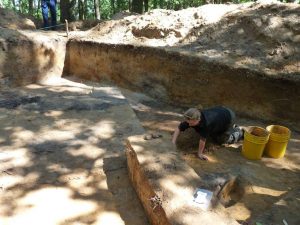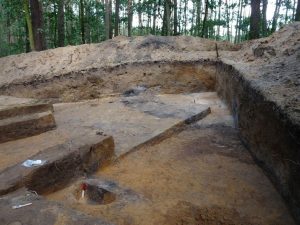Archaeologists discovered over 40 barrows near Sarbia, north-western Poland, that served as places of burial for people living 2500 years ago. The structures were discovered by an amateur who is said to have studied satellite images of the area.

This man, named Maciej Sokołowski, informed the heritage office in Poznań, which sent specialists to examine the area. The archaeologists conducted excavations revealing new information about the previously unknown site. Many of the mounds are preserved in good condition. Some of them measure up to 2 metres and 20 metres in diameter. The mound picked for the study proved to be a barrow enclosed by two circular ditches. Within them the archaeologists discovered charcoal and pieces of pottery. In the inner one, inside a pit cremated remains of a human, possibly an infant, were discovered.

The excavations revealed that the burial ground served the people of the Jastorf culture of the Early Iron Age about 2500 years ago. People of this culture were originally living in the area of southern Scandinavia and north Germany, that later spread throughout Central and Southern Europe. Vast burial grounds are typical for this culture. The new site is located away from the main centre of Jastorf culture’s development, which makes it very valuable. Further archaeological research is scheduled for next year along with prospection of the forests in the area.

(after Nauka w Polsce & Romualda Bartkowiak)